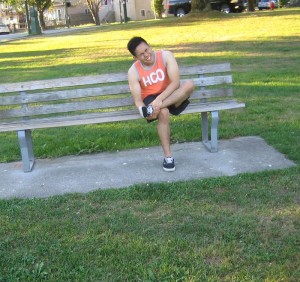Cuboid syndrome is also known as cuboid subluxation or lateral plantar neuritis which is injury on the foot, especially among athletes. It is an injury or dislocation on the lateral side of the foot, the outer side with the small toe. The cuboid bone is at midpoint of the outer side of the foot with the tarsal bones which forms the arch of the foot. Cuboid syndrome can also affect structures such as the calcaneucuboid joint and the surrounding joints.
Cuboid syndrome is painful condition of the foot and this develops once the ligaments and joints situated close to the cuboid bone are damaged or strained. Cuboid bone is a tarsal bone of the foot and there are seven tarsal bones found present in the foot that are responsible in keeping the foot properly stabilized.
Cuboid syndrome is common in athletes, people playing tennis, ballet dancers as well as activities that require over flexing of the feet.
Causes of cuboid syndrome

- Cuboid syndrome happens when cuboid bone is injured or strained. It can be sudden in onset or occurs with repetitive stress on the ligaments.
- The foot is over flexed, prolonged strain on the toes, people with flat feet, gymnasts and athletes who put excessive pressure on the foot while running and jumping are at a high risk of suffering from this syndrome.
- A sprained ankle can cause cuboid syndrome. A sprain in the ankle or inversion sprain occurs when the foot is turned. This can damage the ligaments that are attached to the cuboid bone.
Symptoms of cuboid syndrome
It is important to note that cuboid syndrome is characterized by the following symptoms.
- The pain in the affected area becomes severe when running or walking briskly. In some individuals, they experience weakness of the foot while landing after jumping.
- Pain in the foot can be sudden or can happen gradually.
- Pain becomes severe when standing on the toes or rolling the arches of the foot.
- There is swelling on the lateral side of the foot and bluish or black discoloration of the skin caused by internal bleeding.
Treatment and home remedies for cuboid syndrome
Luckily, there are a number of home remedies that can help relieve some of the symptoms of cuboid syndrome.
- Rest the affected area. The individual should avoid any physical activities and get plenty of bed rest for 1-2 days.
- Apply an ice pack wrapped in a clean towel or cloth for the first 48 hours in order to help minimize inflammation after the injury.
- Use a compression bandage in order to prevent unnecessary foot movement.
- Elevate the legs above the level of the heart for at least two days.
- Take over-the-counter anti-inflammatory medications in order to minimize the pain and swelling.
When the affected area does not respond to any of these treatment options, seek medical help immediately.
